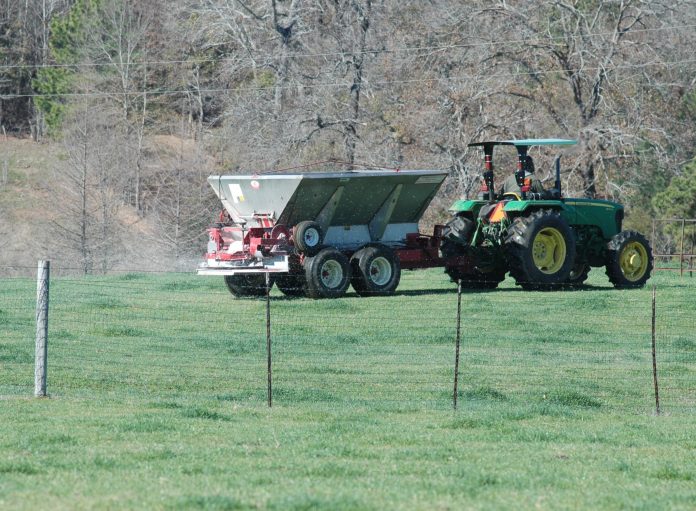As our summer forages begin to appear, we need to start doing more than think about our forage fertility program. The big question on fertilization has been, “Do we apply it with a buggy/spreader or a boat?” With the forecasted warmer weather this weekend, we’re all itching to get out and fertilize. But there are a few items to consider.
When was the last time you’ve taken a soil test on the pasture? Not the whole ranch, but that individual pasture? We normally say that a soil test is good for three years or until apply lime (whichever comes first). Soil tests are inexpensive – but really save you money in the long haul!
You say that you don’t have a soil test? My recommendation is to take the time to get one. First, it’s too wet to apply anything right now (but that will change). As a friend of mine told me on several occasions, not fertilizing with a soil test is like throwing the football. Three things can happen – and two are bad! You can hit it just right and make the touchdown. You can throw it long, or you can throw it short. With my luck, I can’t afford not to take the soil sample.
If you apply the proper amounts of nitrogen, phosphorus and/or potassium without the benefit of a soil sample, congratulations! You’ve won nature’s version of the lottery. However, chances are that you are not applying enough of one of the nutrients or too much of another. Not applying enough can negatively impact your carrying capacity (maybe forcing you to purchase hay). Applying too much of a nutrient that isn’t needed tends to get in your wallet as well. Compare these costs to the cost of a soil test and you’ll quickly see that the soil test is the most inexpensive part of your pasture management!
One mistake that I have seen in the past is setting a forage goal that the pasture has never made before. If you know that the pasture is good for about a big round bale per acre, don’t fertilize in an attempt to grow four big round bales per acre. A friend of mine once tried to justify the over-applying nutrients by saying that they were building up the soil fertility. I told him that a soil fertility program that focuses on building the nutrients in the soil is a good way of putting you in the poor-house. Fertilize by the soil test numbers.
Very importantly – don’t apply urea to wet soil. Wait until the soil dries out before applying urea to reduce the amount that can be lost! Applying urea to a wet soil in warm weather provides you the best chance of losing your nitrogen dollars. The ideal time to apply urea is when the soil is dry and you expect at least a ¼ ” rainfall within the next 24 hours.
If you have any questions, please don’t hesitate to contact your local AgriLife Extension office.
DAVID ANNIS is the Denton County extension agent with Texas A&M AgriLife Extension Service. He can be reached at 940-349-2894 or by e-mail at [email protected].







.jpg)







